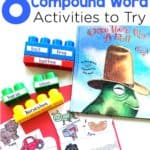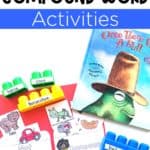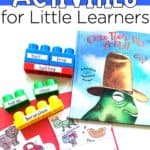


What do meatballs, butterflies, and cowboys have in common? Not much unless you are teaching compound words to your students this week. This topic can be so fun to teach because of the many different ways you can approach it. Whenever possible, I try to make sure all types of learners’ needs can be met through teaching and activities. I put together a list of some of my favorite compound word activities.
Some of these activities are perfect to use in morning work or literacy stations after students know how to do them. Introduce them during whole group time and then let students keep practicing. These compound word activities were always a hit in my classroom. Most importantly, they helped my students really learn and understand this concept.
Before I jump into the list, I want to share the Compound Words Activities unit. It has everything you’ll need to be totally set for the week teaching compound words. It has a fun character and chant to help you introduce compound words. This unit also has a pocket book, flip book, and picture puzzles. It makes teaching compound words a breeze!
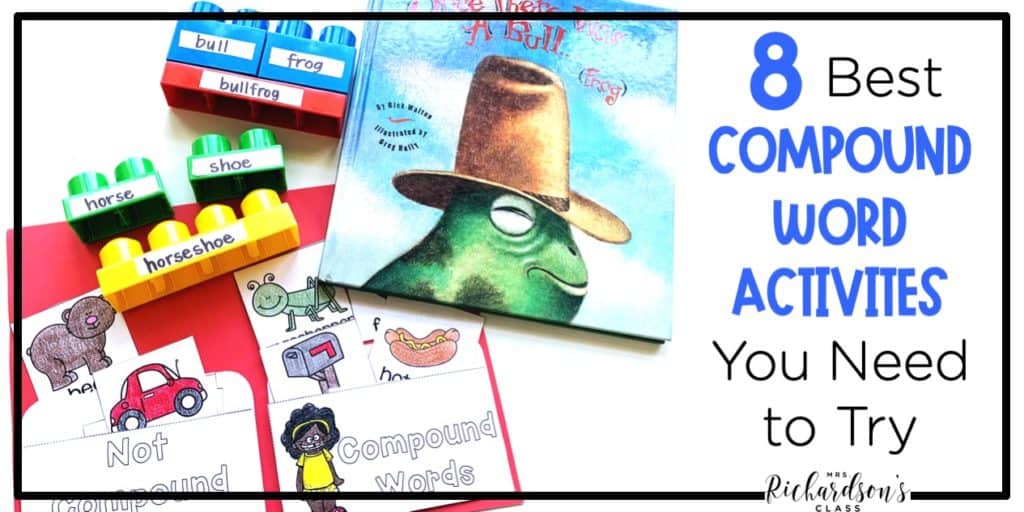
Amazon Affiliate links are used below at no cost to you.
I love a fun song and video to either kick-off a new concept or to review as we learn. Dr. Jean’s Compound Boogie song is catchy and has great coordinating pictures. It has plenty of examples so your students will really get the hang of it. View it HERE.
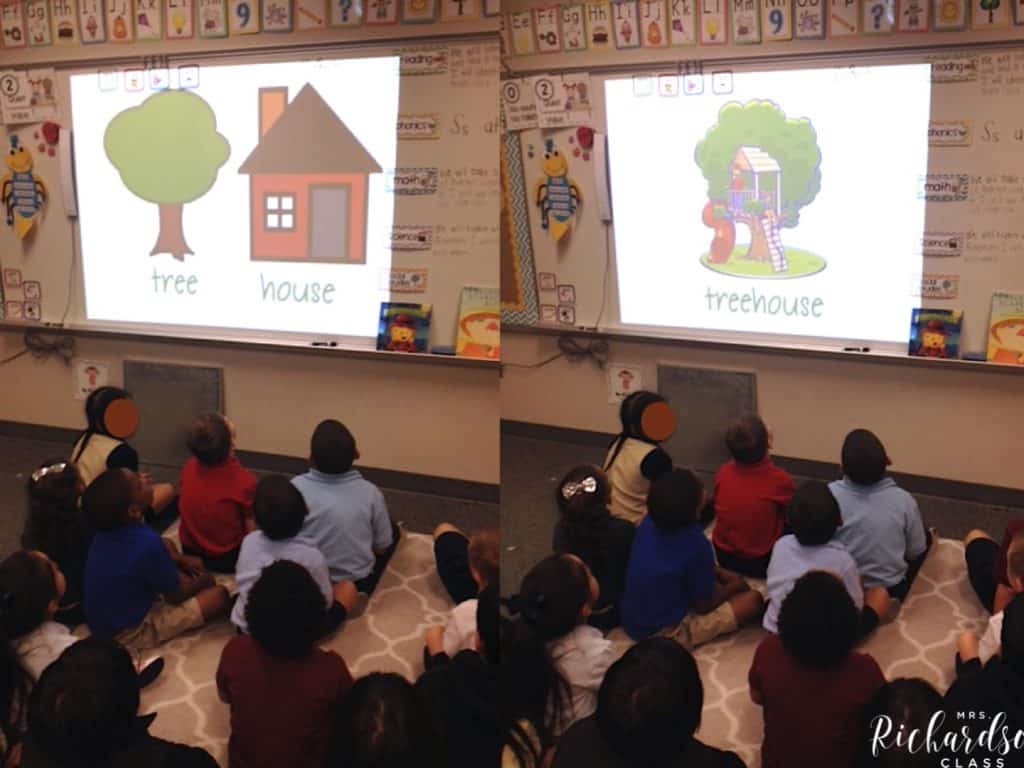
A good anchor chart helps make learning visible and accessible to students. It serves a visual reference for students to look to. I love to make one with the definition of a compound word and a few examples. Then, as the week goes on, we’ll take a minute or two each day, and add more examples as students come up with them.
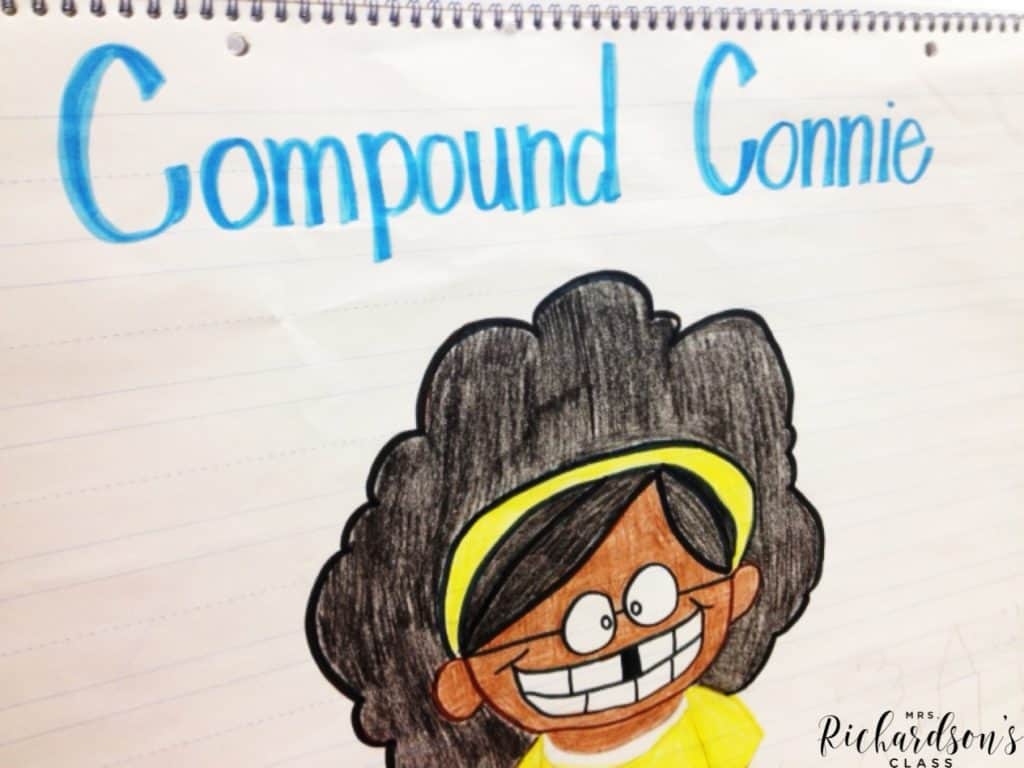
Another fun anchor chart to make is compound words that are food. There are so many! I did this as interactive writing. My students loved adding to this chart!
Read alouds are powerful tools that can help reach auditory learners, build background knowledge, and help grow strategic readers. Read alouds also help you integrate topics, like compound words, throughout the day. While you read, have students listen for compound words. You can have them raise their hands when they hear one. Here are a few books to use for compound words:
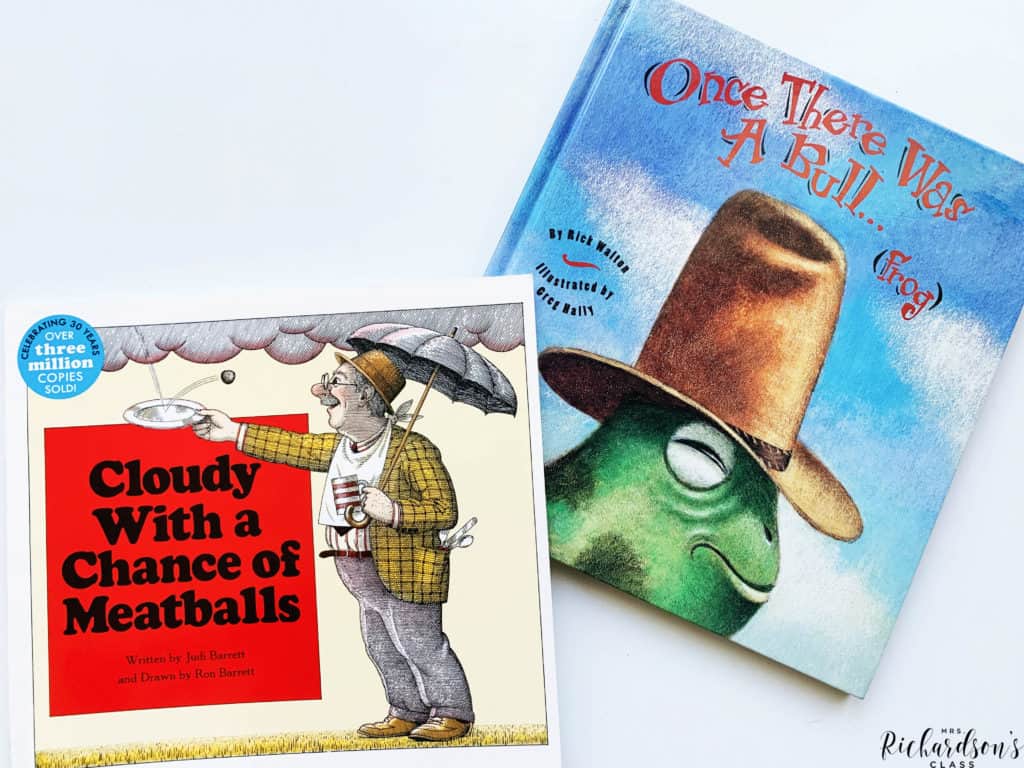
Write words on the blocks by using my favorite Post-It tape on shorter Duplo blocks. Have students place two short Duplo blocks together on a longer one to make a compound word. If you have very low-level readers, you can simply add pictures. You can have students write the new compound word they created and illustrate it if you want something you can check afterward.
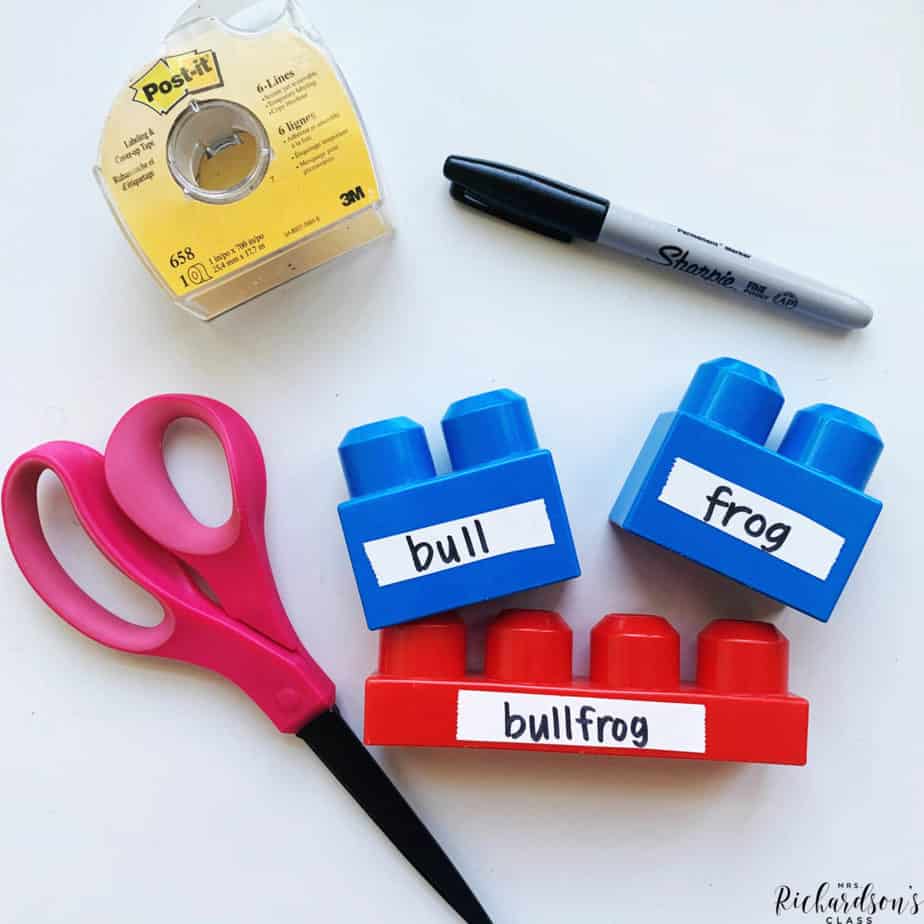
Puzzles are such a great way for students to use their hands and brains while learning. Self-checking puzzles help students immediately see if their thinking is correct or not. Just write a word and draw a simple picture on each side of a notecard. For example, tree and house. Make a unique cut, like a zig-zag, and cut the notecard in half. Create several of these and mix them up.
In my Compound Word Activities Unit, I have this activity already done for you. Plus, there’s a recording page to make it easy for students to jot down their matches and for you to check them.
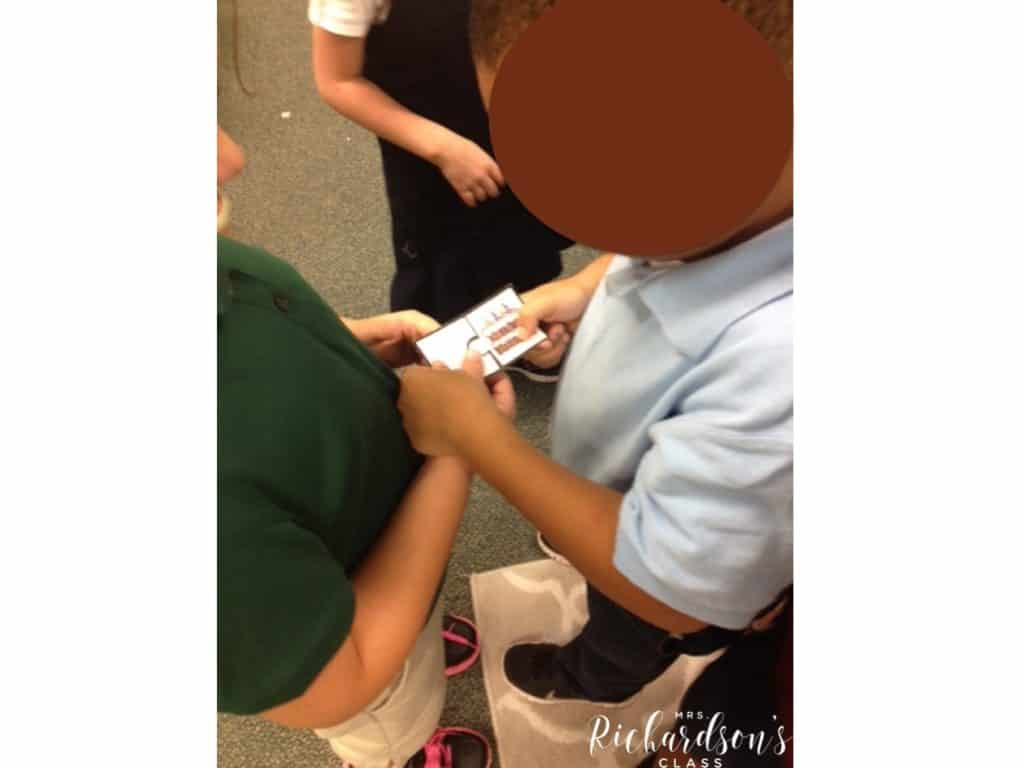
Most students in kindergarten, first grade, and second grade know how to play memory. Add a twist to the classic game with compound words. After you introduce this and model how to play, let students practice. Then, you can use it during morning work or in a word work or game literacy station.
There are several games online that you could use to let students practice identifying and making compound words. If you have iPads, you could use them in literacy stations. Check out what I found on YouTube.
You can have students play two ways:
Sorting is one of the higher-level compound word activities on Bloom’s Taxonomy. Show some examples of compound words with pictures and words that are not compound words. Have students sort them.
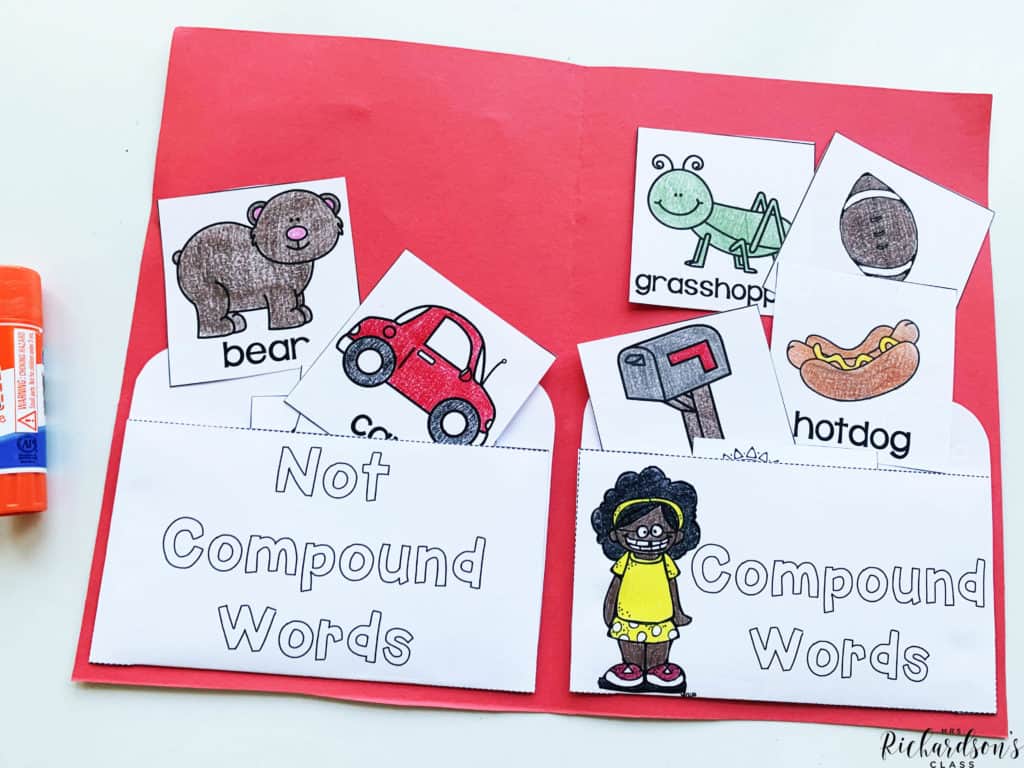
If you want this activity already all planned and done for you, my Compound Word Activities has this activity in it. Students make a pocket book and sort the pictures. I love sorting this way because it’s interactive, and the students can take the pieces out, mix them up, and sort them again.
These eight compound word activities will be sure that the different types of students’ learning needs are met and support your ELL students, too. Remember that with any concept you teach, it’s important to add variety to your lessons and activities. As a result, students will be engaged and learn more effectively.
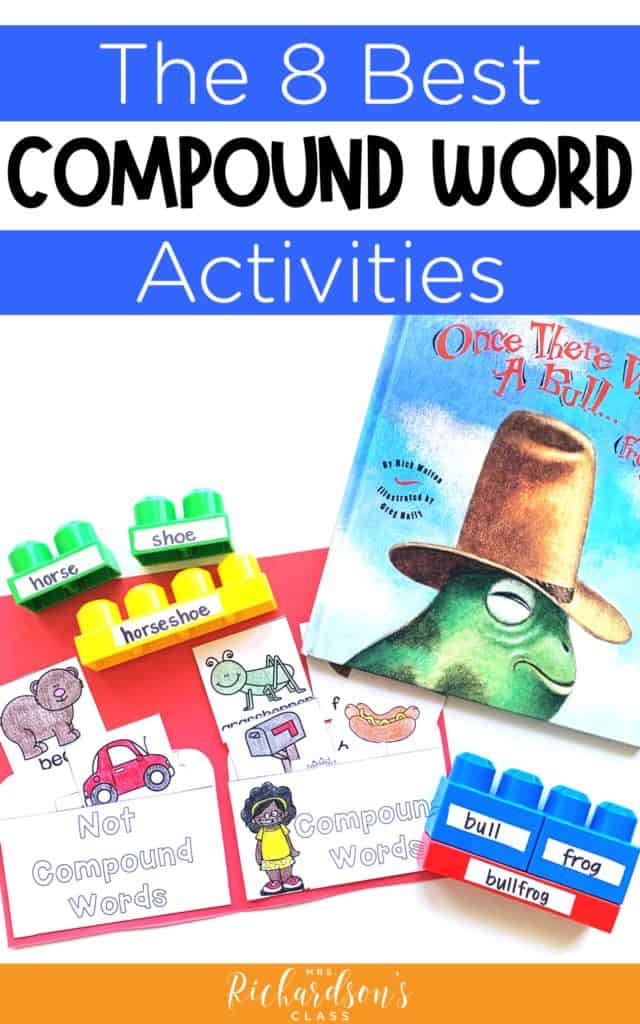
pin it
Do you have any must-do compound word activities? Leave a comment and let me know!
Compound Word Activities Unit : This unit has interactive activities to help you teach compound words and help your students master this standard. It includes:

Want to use the latest research to boost your readers during small groups? This FREE guide is packed with engaging ideas to help them grow!

I’m a K-1 teacher who is passionate about making lessons your students love and that are easy to implement for teachers. Helping teachers like you navigate their way through their literacy block brings me great joy. I am a lifelong learner who loves staying on top of current literacy learning and practices. Here, you’ll find the tools you need to move your K-2 students forward!


| Cookie | Duration | Description |
|---|---|---|
| cookielawinfo-checkbox-analytics | 11 months | This cookie is set by GDPR Cookie Consent plugin. The cookie is used to store the user consent for the cookies in the category "Analytics". |
| cookielawinfo-checkbox-functional | 11 months | The cookie is set by GDPR cookie consent to record the user consent for the cookies in the category "Functional". |
| cookielawinfo-checkbox-necessary | 11 months | This cookie is set by GDPR Cookie Consent plugin. The cookies is used to store the user consent for the cookies in the category "Necessary". |
| cookielawinfo-checkbox-others | 11 months | This cookie is set by GDPR Cookie Consent plugin. The cookie is used to store the user consent for the cookies in the category "Other. |
| cookielawinfo-checkbox-performance | 11 months | This cookie is set by GDPR Cookie Consent plugin. The cookie is used to store the user consent for the cookies in the category "Performance". |
| viewed_cookie_policy | 11 months | The cookie is set by the GDPR Cookie Consent plugin and is used to store whether or not user has consented to the use of cookies. It does not store any personal data. |
